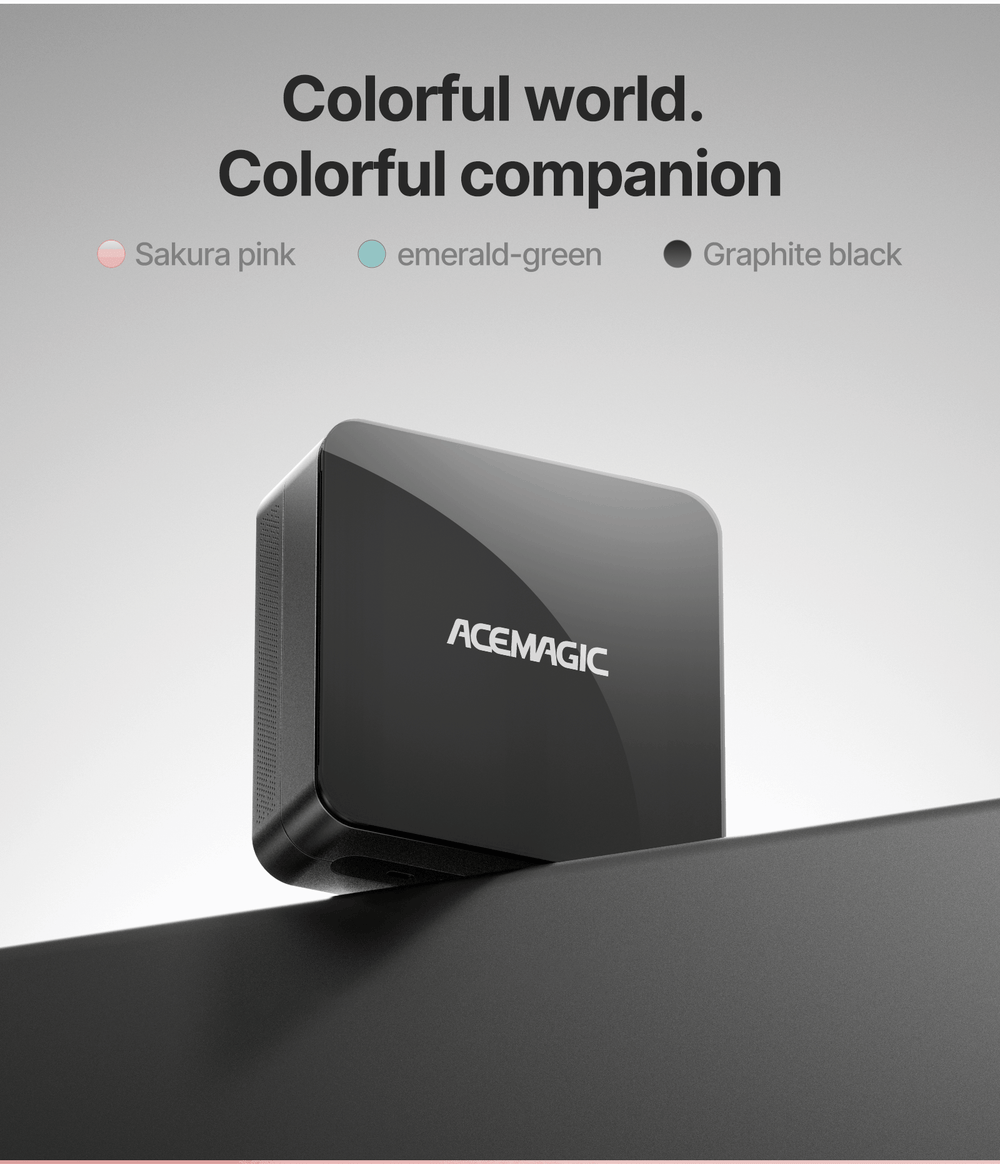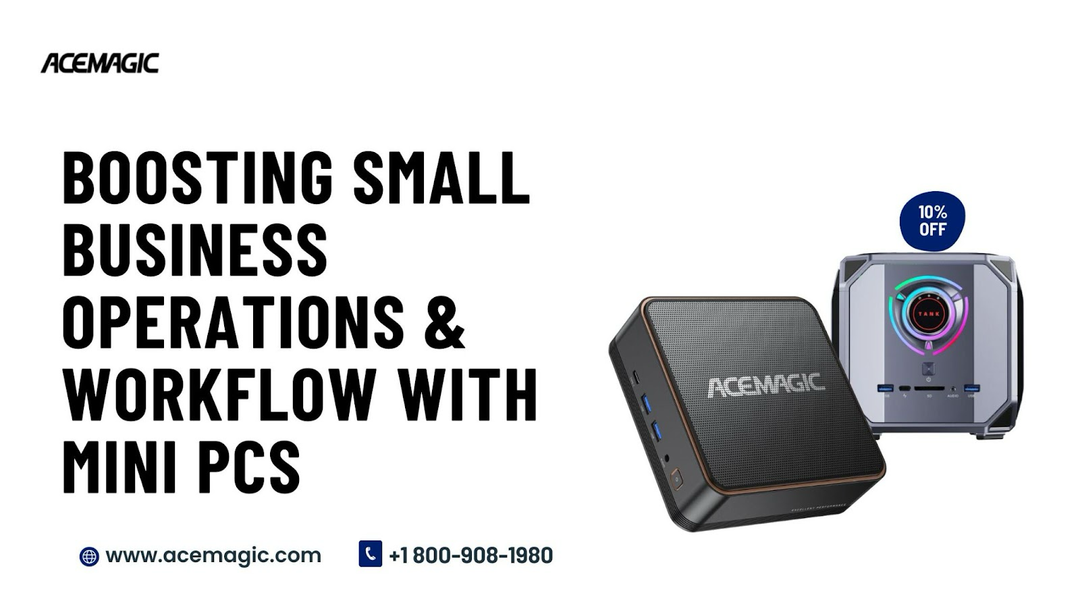How to Build a Smart Home from Scratch?

AM08 Pro
IntroductionBuilding a smart home from scratch can seem like an overwhelming endeavor, especially considering the plethora of smart devices available on the market today. However, with a clear plan and some basic understanding of how smart home ecosystems work, you can transform your home into a connected, automated, and intelligent space. This guide will walk you through the essential steps to build a smart home, highlighting the role of a Mini PC, which can act as the nerve center of your setup.
The Basics of a Smart Home
A smart home is a living space where various devices and appliances are connected to the internet and can be remotely controlled or automated. These smart devices include everything from lights, thermostats, and locks to televisions, speakers, and even kitchen appliances.
Choosing Your Smart Home Ecosystem
The first step in building your smart home is to decide on a smart home ecosystem. This ecosystem is the platform that your smart devices will use to communicate with each other and with you. Some of the most popular ecosystems include Amazon Alexa, Google Assistant, and Apple HomeKit.
The choice of the ecosystem will largely depend on your personal preferences, the devices you plan to use, and their compatibility with these platforms. It's worth noting that some devices are compatible with multiple ecosystems, providing you with more flexibility.
The Role of a Mini PC
A Mini PC can serve as a versatile hub for your smart home. It can run server software that controls smart devices, host a dashboard for managing your smart home, and even serve as a media center. With its compact size, low power consumption, and capability to run 24/7, a Mini PC is an excellent addition to any smart home setup.
Plan Your Smart Home

AM08 Pro
Before you start buying devices, it's crucial to plan your smart home based on your needs and budget. Start by identifying the areas in your home where smart devices could provide the most benefit. This might include:
Lighting: Smart bulbs can be controlled remotely, programmed to follow a schedule, or even adjusted in color or brightness based on the time of day or your activities.
Climate Control: A smart thermostat can learn your schedule and preferences over time, adjusting the temperature to save energy while keeping you comfortable.
Security: Smart locks, security cameras, and doorbell cameras can provide enhanced security and peace of mind.
Entertainment: Smart TVs, speakers, and streaming devices can streamline your entertainment experience.
Kitchen and Laundry: Smart appliances can make everyday tasks easier and more efficient.
Select and Install Your Devices
Once you have a plan, you can start shopping for devices. When choosing devices, consider factors like compatibility with your chosen ecosystem, ease of installation and use, and the reputation of the brand for quality and security.
Installation processes vary widely between devices, but most come with detailed instructions or even a dedicated app to guide you through the process. Many devices are designed for easy DIY installation, but for more complex devices like smart thermostats or door locks, you might want to consider professional installation.
Set Up Your Mini PC
With your devices installed, you can set up your Mini PC to manage your smart home. This might involve installing server software like Home Assistant or openHAB, which can communicate with your devices and provide advanced automation capabilities. You might also want to set up a dashboard that allows you to control your devices from a single interface.
Configure Automation and Routines
The real power of a smart home comes from automation and routines. These are predefined rules that control your devices based on specific triggers. For example, you might set up a morning routine that turns on your lights, adjusts your thermostat, and starts your coffee maker when your alarm goes off.
Controlling Your Smart Home
Once your devices and automation are set up, the next step is to decide how you want to control your smart home. Most smart home ecosystems offer a variety of control options:
Voice control: If you have a smart speaker or display like Amazon Echo or Google Nest Hub, you can use voice commands to control your devices.
Mobile app: Each smart home ecosystem has a companion mobile app that lets you control your devices from anywhere. Some devices also have their own apps with additional features.
Physical controls: Many smart devices can still be controlled the old-fashioned way. For example, you can usually still flip a smart light switch by hand or adjust a smart thermostat directly on the device.
Web interface or dashboard: If you've set up a Mini PC as your smart home hub, you can use its dashboard to control your devices from a web browser. This can be particularly handy if you want to check on your home from a computer at work or on the go.
Maintenance and Updates
Just like any other tech, your smart home will require some maintenance to keep it running smoothly. This might include updating device firmware, replacing batteries in battery-powered devices, or troubleshooting and fixing any issues that come up.
One of the key advantages of having a Mini PC as your smart home hub is that you can often manage updates and maintenance tasks centrally rather than having to deal with each device individually. Some server software can even automate updates for you, ensuring that your smart home stays secure and up to date.
Conclusion
Building a smart home from scratch can be a fun and rewarding project. With careful planning, the right devices, and a little bit of technical know-how, you can create a home that's not only smart but also truly responsive to your needs and lifestyle. And with a Mini PC as your smart home hub, you can enjoy an added level of control and convenience. So why not take the plunge and start building your smart home today?










Leave a comment